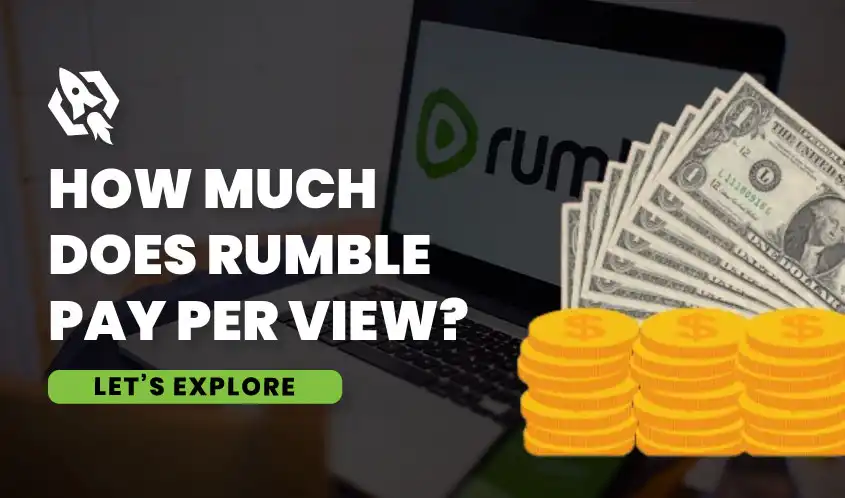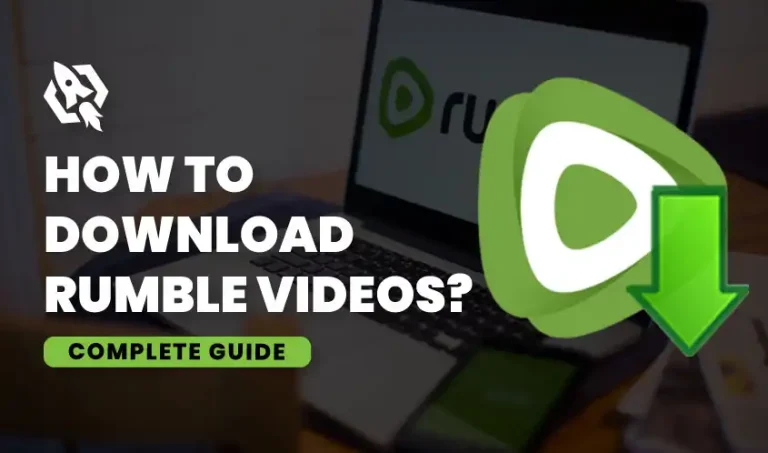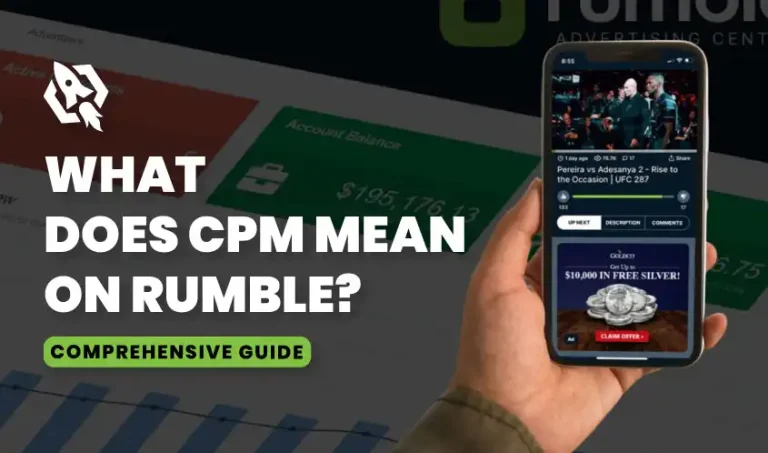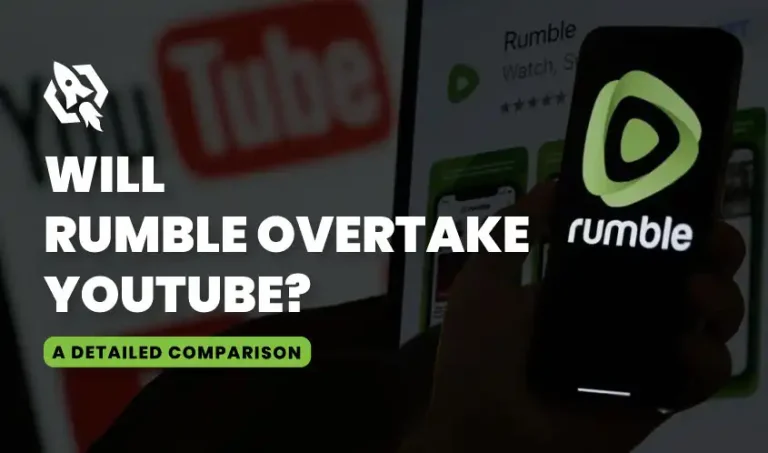In recent years, Rumble has emerged as a popular platform for video creators looking to monetize their content. As more and more people turn to alternative platforms for better revenue opportunities, understanding Rumble’s payment system becomes crucial for aspiring and established creators alike.
Rumble’s payment structure stands out from other video platforms like YouTube due to its unique licensing model. When creators upload videos to Rumble, they have the option to choose from several licensing arrangements: Exclusive, Non-Exclusive, Rumble Only, and Personal Use. The licensing option you select directly impacts your potential earnings.
For instance, choosing an exclusive license grants Rumble full rights to your video in exchange for a higher upfront payment and a share of the ad revenue. Non-exclusive licenses allow creators to retain rights while still earning a smaller upfront fee and ad revenue share. This flexibility can cater to various creator needs, from those seeking immediate payouts to those looking to maintain control over their content.
Information about Rumble’s Payment Structure
Rumble operates on a different payment model compared to other video platforms like YouTube. Instead of relying heavily on ad revenue sharing, Rumble offers a more straightforward licensing approach for video content. Here’s how it works:
- Licensing Fees: Rumble pays creators based on the licensing of their videos. When you upload a video to Rumble, you can choose between several licensing options:
- Exclusive: Rumble gets full rights to your video, and you receive a higher upfront payment plus a share of the ad revenue.
- Non-Exclusive: You retain the rights to your video, and Rumble pays a smaller upfront fee along with a portion of the ad revenue.
- Rumble Only: Your video can only be hosted on Rumble, with a decent upfront payment and ad revenue share.
- Personal Use: The video is used personally with limited revenue opportunities from Rumble.
- Ad Revenue Sharing: Apart from licensing fees, Rumble also shares ad revenue with creators. The exact percentage varies, but creators typically earn between 60% to 90% of the ad revenue generated from their videos.
- Rumble Player: Videos hosted on Rumble’s player, which can be embedded on other websites, generate additional revenue for creators through ad impressions and clicks.
How Much Does Rumble Pay Per View?
Determining the exact amount Rumble pays per view can be complex due to several influencing factors. Here’s a breakdown of what affects your earnings:
Type of License: As mentioned earlier, the type of license you choose affects your upfront payment and share of ad revenue. Exclusive licenses generally offer higher payments.
- Ad Performance: Revenue per view is significantly impacted by the performance of ads shown alongside your video. Factors such as viewer demographics, geographic location, and ad engagement rates play a crucial role.
- Video Category: Certain categories attract higher-paying ads. For example, videos related to finance, technology, and health often have higher CPM (cost per thousand impressions) rates compared to entertainment or lifestyle content.
- Viewer Engagement: Videos with higher engagement (likes, comments, shares) tend to perform better in terms of ad revenue, as they attract more attention and repeated views.
Estimating Earnings Per View on Rumble Videos
While Rumble does not disclose exact rates, estimates can be made based on industry averages and creator reports. On average, Rumble creators can expect to earn between $0.01 to $0.05 per view, though this can vary widely. High-performing videos in lucrative categories with strong viewer engagement can earn significantly more.
Which Platform is Best for Earnings- Rumble or YouTube?
Choosing between Rumble and YouTube for maximizing earnings depends on several factors, including your content strategy, audience reach, and monetization goals. YouTube, as the world’s largest video-sharing platform, offers unparalleled reach and potential for viral growth. It operates primarily on an ad revenue sharing model where creators earn money based on the number of ad impressions their videos generate. YouTube also provides additional monetization options such as channel memberships, Super Chats, and merchandise sales, which can significantly boost earnings for popular creators. However, YouTube’s algorithm changes and stringent content policies can sometimes make it challenging for new or niche creators to gain traction and sustain revenue.
On the other hand, Rumble offers a unique advantage through its licensing model, providing creators with upfront payments based on the licensing agreement they choose—Exclusive, Non-Exclusive, Rumble Only, or Personal Use. This approach can be particularly beneficial for creators looking for immediate payouts. Additionally, Rumble’s ad revenue sharing model is also quite competitive, often providing a higher percentage of ad revenue compared to YouTube. For creators who want more control over their content rights and prefer a straightforward payment structure, Rumble can be an attractive option.
Ultimately, the best platform for earning depends on your specific needs and goals. If you prioritize massive reach, diverse monetization streams, and potential for long-term growth, YouTube might be the better choice. However, if you prefer a platform that offers flexible licensing, higher ad revenue shares, and immediate payments, Rumble could be more suitable. Many creators find value in leveraging both platforms to diversify their income and reach broader audiences.
Maximizing Your Earnings on Rumble
To optimize your revenue on Rumble, consider the following strategies:
- Choose the Right Licensing Option: Carefully evaluating the licensing options is crucial for maximizing earnings on Rumble. Exclusive licenses may offer higher upfront payments and ad revenue shares but require giving up full rights to the video. Non-exclusive licenses provide more flexibility, allowing creators to upload the same content on other platforms, albeit with a smaller upfront fee. The decision should align with the creator’s goals, whether they prioritize immediate earnings or long-term control and flexibility over their content.
- Create High-Quality Content: High-quality content is the cornerstone of successful monetization on Rumble. Videos that captivate and engage viewers are more likely to be shared and recommended, leading to increased views and higher ad revenue. Investing in good equipment, scripting, editing, and ensuring that the content is informative, entertaining, or otherwise valuable to the audience can significantly boost a video’s performance. Consistently producing high-quality videos helps build a loyal audience, which is crucial for sustained revenue generation.
- Optimize Video Titles and Descriptions: Optimizing video titles and descriptions with relevant keywords can greatly enhance a video’s visibility on Rumble. By incorporating popular search terms and phrases that potential viewers are likely to use, creators can improve their chances of appearing in search results and recommendations. This optimization not only helps attract more viewers but also increases the likelihood of generating higher ad revenue. Detailed and accurate descriptions also provide context to the audience, improving the overall viewer experience and engagement.
- Promote Your Videos: Promotion is key to increasing visibility and driving traffic to your Rumble videos. Sharing your content on social media platforms, embedding it on blogs, and collaborating with other creators can expand your reach. Effective promotion strategies ensure that more people discover and watch your videos, leading to higher view counts and increased ad revenue. Additionally, leveraging email newsletters and engaging with online communities related to your video’s niche can further amplify your video’s reach and impact.
- Engage with Your Audience: Building a community around your content by actively engaging with your audience can significantly boost your video’s performance. Responding to comments, encouraging discussions, and showing appreciation for viewer support fosters loyalty and repeated viewership. Engaged audiences are more likely to share your videos, subscribe to your channel, and support your content, all of which contribute to higher earnings. Creating a positive and interactive viewer experience helps in establishing a strong and loyal fan base, essential for long-term success on Rumble.
- Analyze Performance: Regularly reviewing your video analytics is essential for understanding what works and what doesn’t. Analyzing metrics such as view counts, watch time, engagement rates, and demographic information provides valuable insights into your audience’s preferences and behaviors. This data-driven approach allows creators to refine their content strategy, optimize future videos, and enhance overall performance. By continuously learning and adapting based on analytical feedback, creators can improve their chances of success and maximize their earnings on Rumble.
FAQs
Rumble offers different licensing options that can provide higher upfront payments compared to YouTube’s ad revenue sharing model. However, YouTube typically has a larger audience, which can lead to more views and potentially higher overall earnings for popular videos.
Ad revenue on Rumble is influenced by viewer demographics, geographic location, ad engagement rates, video category, and viewer engagement with the video.
Yes, exclusive licenses generally offer higher upfront payments and a share of ad revenue. However, you give Rumble full rights to your video, so consider if this aligns with your long-term goals.
While it varies, creators typically earn between $0.01 to $0.05 per view. High-performing videos in lucrative categories can earn more.
Yes, some categories like finance, technology, and health attract higher-paying ads, resulting in higher earnings per view compared to other categories like entertainment or lifestyle.
Rumble typically pays creators monthly. However, the payment schedule can vary based on your account status and accumulated earnings.
Rumble can be a good platform for new creators, especially those looking for straightforward licensing opportunities and a potentially higher upfront payment for their videos.
Conclusion
Rumble offers a unique and potentially lucrative opportunity for video creators to monetize their content through various licensing options and ad revenue sharing. While the exact amount you can earn per view varies, understanding the factors that influence your earnings and implementing strategies to maximize your revenue can significantly impact your success on the platform. By producing high-quality content, optimizing your videos for search, and engaging with your audience, you can make the most of Rumble’s monetization opportunities and grow your income as a content creator.
Rumble’s focus on licensing and ad revenue sharing presents a promising alternative to traditional video platforms. Whether you’re a seasoned creator or just starting, leveraging Rumble’s features and understanding its payment structure can help you navigate the platform more effectively and achieve your monetization goals.
By staying informed about the latest trends and continuously refining your content strategy, you can ensure that your videos perform well and generate substantial revenue on Rumble.




